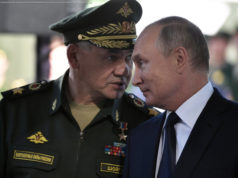Would Ahmaud Arbery’s story have been told without a violent video?
Would Ahmaud Arbery’s story have been told without a violent video?
Though there have been more than 75,000 deaths from the novel coronavirus in the United States, there have been almost no images of dead bodies in the media during this pandemic. Instead, we are shown images of empty streets. Shuttered storefronts. Hospital workers in masks and shields. Graphs with curves flattening or rising. And armed white people storming government buildings. These are the dominant images on television, in traditional news outlets, and on social media. Where are the images of the virus’s dead?
These missing images are even more apparent to me now that there is a new image of death circulating: the video of Ahmaud Arbery, a Black man, being graphically shot and killed on February 23; Arbery was attacked by two white men, identified as Gregory McMichael and his son Travis McMichael, while he was jogging along a residential street in Satilla Shores in Glynn County, Georgia. No charges were made against the McMichaels (or the third man who recorded the video) until the video went viral; civil rights attorney S. Lee Merritt, who is representing Arbery’s family, reposted the leaked video on his Twitter account.
As someone who has been studying images of violence for 15 years, this is what I’ve learned: Images — both those we see and those blocked from our view — send messages about whose lives count, about whose lives should be mourned, about who belongs to us and who doesn’t. And those messages are shaped by racism.
In this current context, with the images of people dying of Covid-19 hidden, the very fact that I can watch Arbery being killed (though I have chosen not to view the video) marks his body as somehow “different,” as less than. Because we aren’t allowed to see the victims of the virus, because their bodies are protected from our view, it’s the visibility of Arbery’s dead body — and of Michael Brown’s and Trayvon Martin’s and Eric Garner’s and Tamir Rice’s and Walter Scott’s and Freddie Gray’s — that renders his bullet-ridden body as other.
In a call to release photos of people dying of Covid-19, Harvard professor Sarah Elizabeth Lewis wrote at the New York Times, “Visualization is a powerful tool — it can help us more deeply understand the severity of the situation as we work to curb the virus. But the visuals we need most in this time are difficult to come by.”
Lewis argued that if we could see the suffering wrought by the virus, we might take the disease more seriously and stay home. She traced the history of images’ effectiveness — from the Civil War, to Dorothea Lange during the Depression, to the AIDS crisis, to the poisoned water in Flint, Michigan.
She is right: Images have made a difference. I’m thinking of Nick Ut’s photograph of 9-year-old Phan Thi Kim Phuc during the Vietnam War, David Jackson’s photograph of Emmett Till’s open coffin, and the photographs of torture taken at Abu Ghraib prison in Iraq.
Home
United States
USA — Criminal The viral video of Ahmaud Arbery’s killing shows whose deaths we afford...






